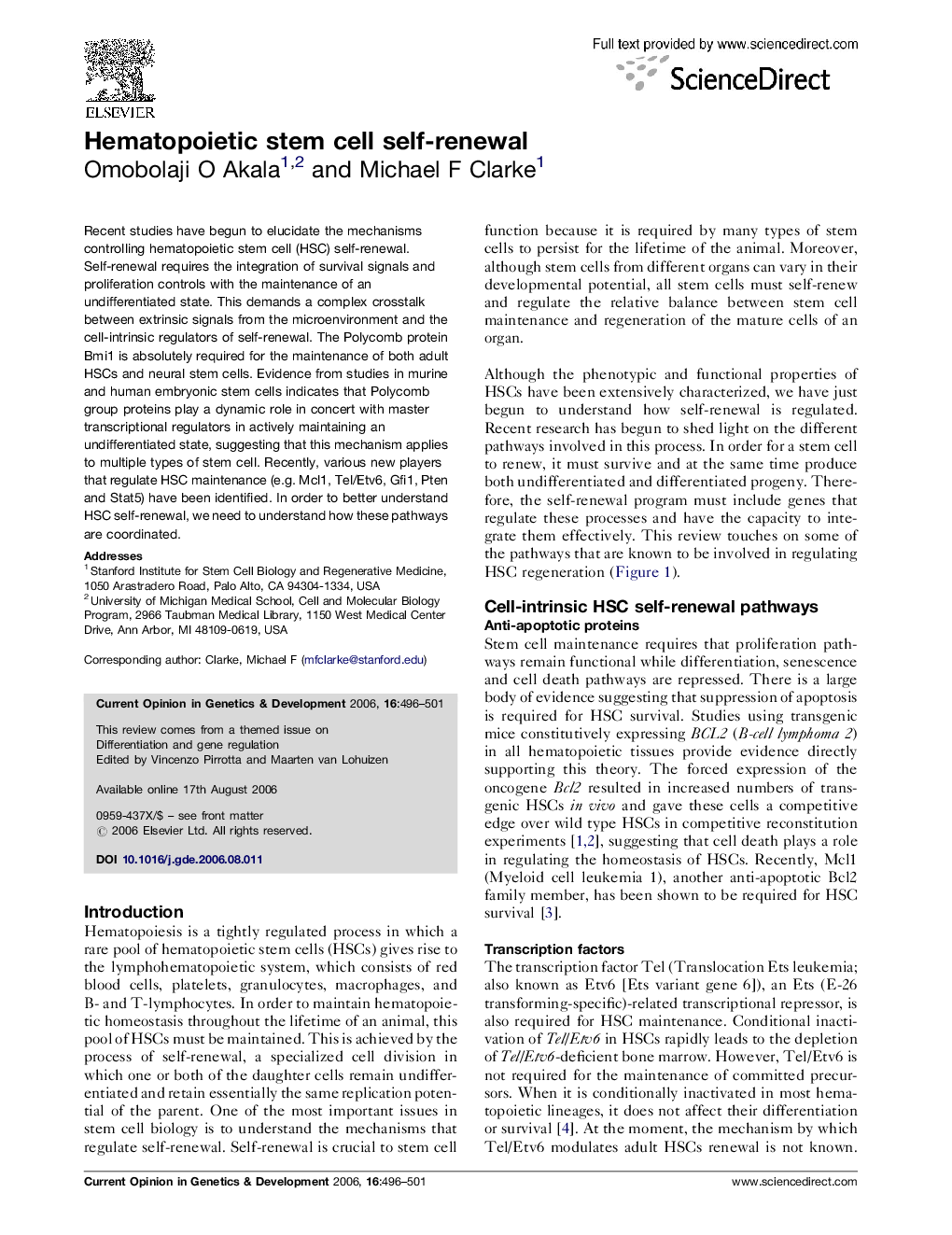| Article ID | Journal | Published Year | Pages | File Type |
|---|---|---|---|---|
| 2785253 | Current Opinion in Genetics & Development | 2006 | 6 Pages |
Recent studies have begun to elucidate the mechanisms controlling hematopoietic stem cell (HSC) self-renewal. Self-renewal requires the integration of survival signals and proliferation controls with the maintenance of an undifferentiated state. This demands a complex crosstalk between extrinsic signals from the microenvironment and the cell-intrinsic regulators of self-renewal. The Polycomb protein Bmi1 is absolutely required for the maintenance of both adult HSCs and neural stem cells. Evidence from studies in murine and human embryonic stem cells indicates that Polycomb group proteins play a dynamic role in concert with master transcriptional regulators in actively maintaining an undifferentiated state, suggesting that this mechanism applies to multiple types of stem cell. Recently, various new players that regulate HSC maintenance (e.g. Mcl1, Tel/Etv6, Gfi1, Pten and Stat5) have been identified. In order to better understand HSC self-renewal, we need to understand how these pathways are coordinated.
